Ophir Frieder
Lexically-Accelerated Dense Retrieval
Jul 31, 2023Abstract:Retrieval approaches that score documents based on learned dense vectors (i.e., dense retrieval) rather than lexical signals (i.e., conventional retrieval) are increasingly popular. Their ability to identify related documents that do not necessarily contain the same terms as those appearing in the user's query (thereby improving recall) is one of their key advantages. However, to actually achieve these gains, dense retrieval approaches typically require an exhaustive search over the document collection, making them considerably more expensive at query-time than conventional lexical approaches. Several techniques aim to reduce this computational overhead by approximating the results of a full dense retriever. Although these approaches reasonably approximate the top results, they suffer in terms of recall -- one of the key advantages of dense retrieval. We introduce 'LADR' (Lexically-Accelerated Dense Retrieval), a simple-yet-effective approach that improves the efficiency of existing dense retrieval models without compromising on retrieval effectiveness. LADR uses lexical retrieval techniques to seed a dense retrieval exploration that uses a document proximity graph. We explore two variants of LADR: a proactive approach that expands the search space to the neighbors of all seed documents, and an adaptive approach that selectively searches the documents with the highest estimated relevance in an iterative fashion. Through extensive experiments across a variety of dense retrieval models, we find that LADR establishes a new dense retrieval effectiveness-efficiency Pareto frontier among approximate k nearest neighbor techniques. Further, we find that when tuned to take around 8ms per query in retrieval latency on our hardware, LADR consistently achieves both precision and recall that are on par with an exhaustive search on standard benchmarks.
Caching Historical Embeddings in Conversational Search
Nov 25, 2022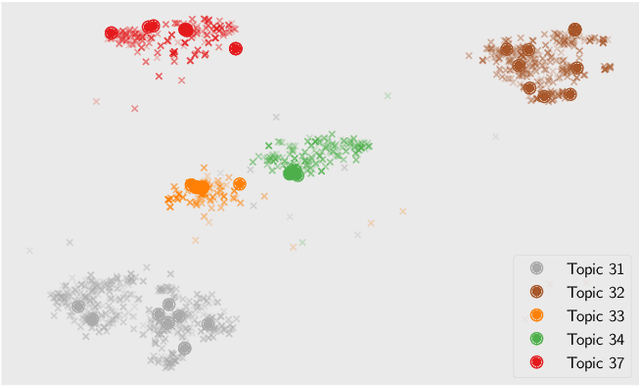
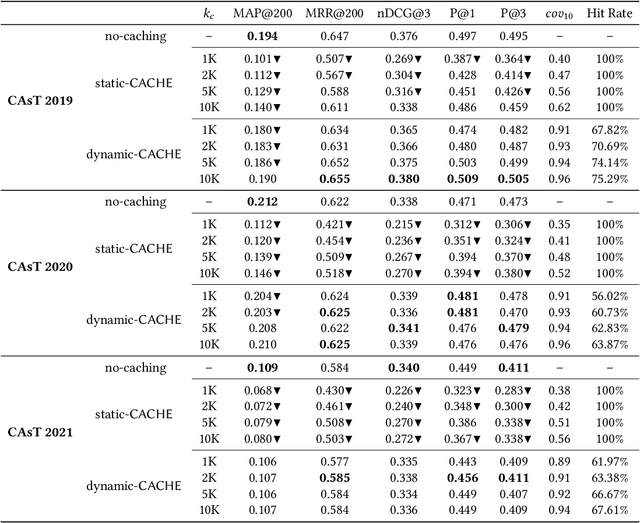
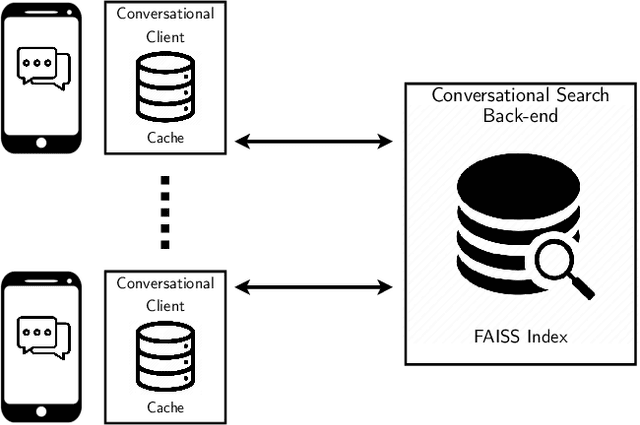

Abstract:Rapid response, namely low latency, is fundamental in search applications; it is particularly so in interactive search sessions, such as those encountered in conversational settings. An observation with a potential to reduce latency asserts that conversational queries exhibit a temporal locality in the lists of documents retrieved. Motivated by this observation, we propose and evaluate a client-side document embedding cache, improving the responsiveness of conversational search systems. By leveraging state-of-the-art dense retrieval models to abstract document and query semantics, we cache the embeddings of documents retrieved for a topic introduced in the conversation, as they are likely relevant to successive queries. Our document embedding cache implements an efficient metric index, answering nearest-neighbor similarity queries by estimating the approximate result sets returned. We demonstrate the efficiency achieved using our cache via reproducible experiments based on TREC CAsT datasets, achieving a hit rate of up to 75% without degrading answer quality. Our achieved high cache hit rates significantly improve the responsiveness of conversational systems while likewise reducing the number of queries managed on the search back-end.
Self-supervised Representation Learning on Electronic Health Records with Graph Kernel Infomax
Sep 01, 2022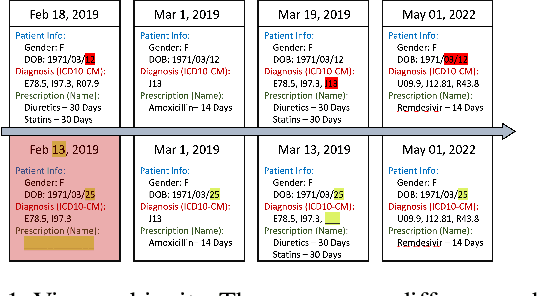
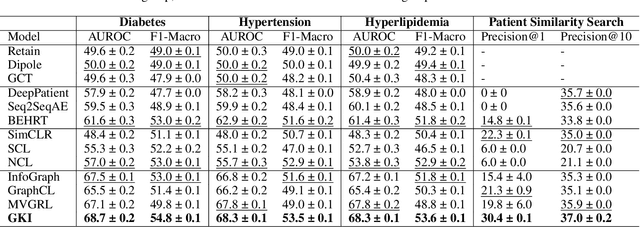
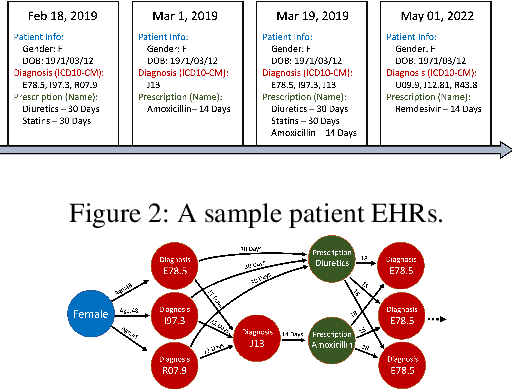

Abstract:Learning Electronic Health Records (EHRs) representation is a preeminent yet under-discovered research topic. It benefits various clinical decision support applications, e.g., medication outcome prediction or patient similarity search. Current approaches focus on task-specific label supervision on vectorized sequential EHR, which is not applicable to large-scale unsupervised scenarios. Recently, contrastive learning shows great success on self-supervised representation learning problems. However, complex temporality often degrades the performance. We propose Graph Kernel Infomax, a self-supervised graph kernel learning approach on the graphical representation of EHR, to overcome the previous problems. Unlike the state-of-the-art, we do not change the graph structure to construct augmented views. Instead, we use Kernel Subspace Augmentation to embed nodes into two geometrically different manifold views. The entire framework is trained by contrasting nodes and graph representations on those two manifold views through the commonly used contrastive objectives. Empirically, using publicly available benchmark EHR datasets, our approach yields performance on clinical downstream tasks that exceeds the state-of-the-art. Theoretically, the variation on distance metrics naturally creates different views as data augmentation without changing graph structures.
TAR on Social Media: A Framework for Online Content Moderation
Aug 29, 2021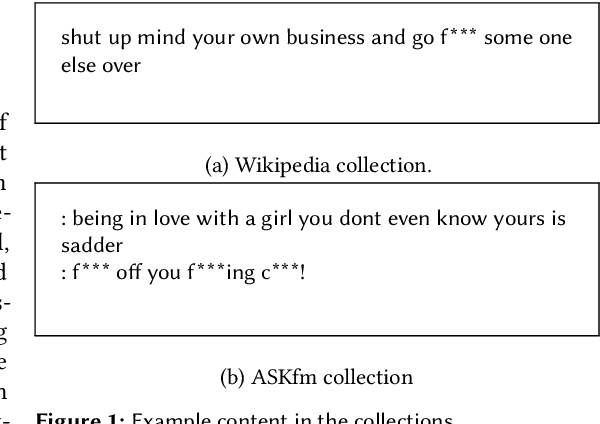
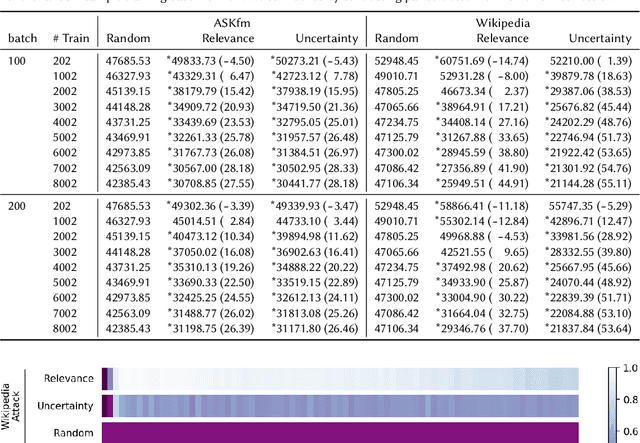
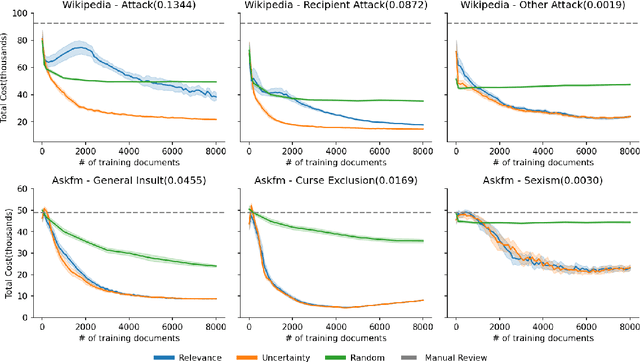
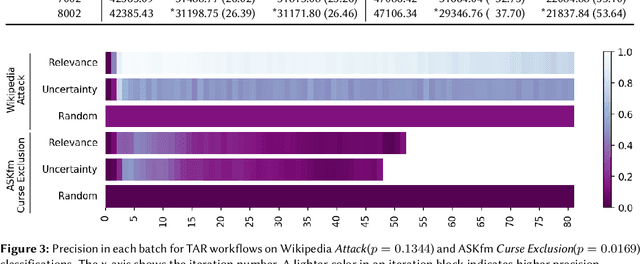
Abstract:Content moderation (removing or limiting the distribution of posts based on their contents) is one tool social networks use to fight problems such as harassment and disinformation. Manually screening all content is usually impractical given the scale of social media data, and the need for nuanced human interpretations makes fully automated approaches infeasible. We consider content moderation from the perspective of technology-assisted review (TAR): a human-in-the-loop active learning approach developed for high recall retrieval problems in civil litigation and other fields. We show how TAR workflows, and a TAR cost model, can be adapted to the content moderation problem. We then demonstrate on two publicly available content moderation data sets that a TAR workflow can reduce moderation costs by 20% to 55% across a variety of conditions.
Certifying One-Phase Technology-Assisted Reviews
Aug 29, 2021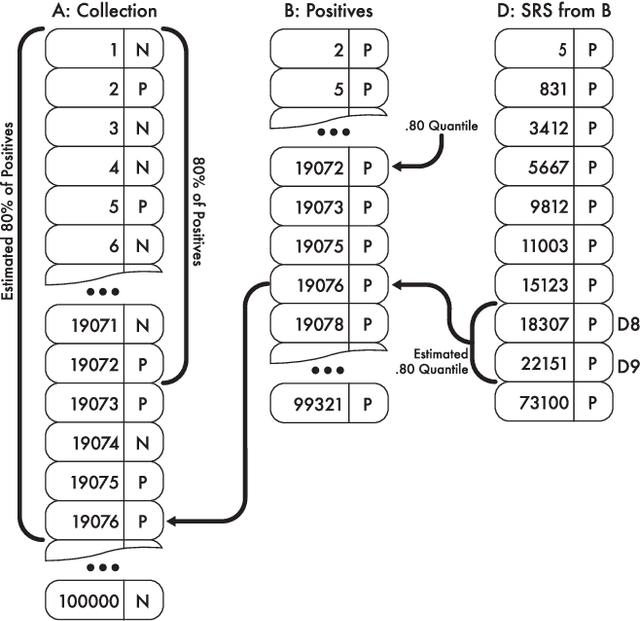
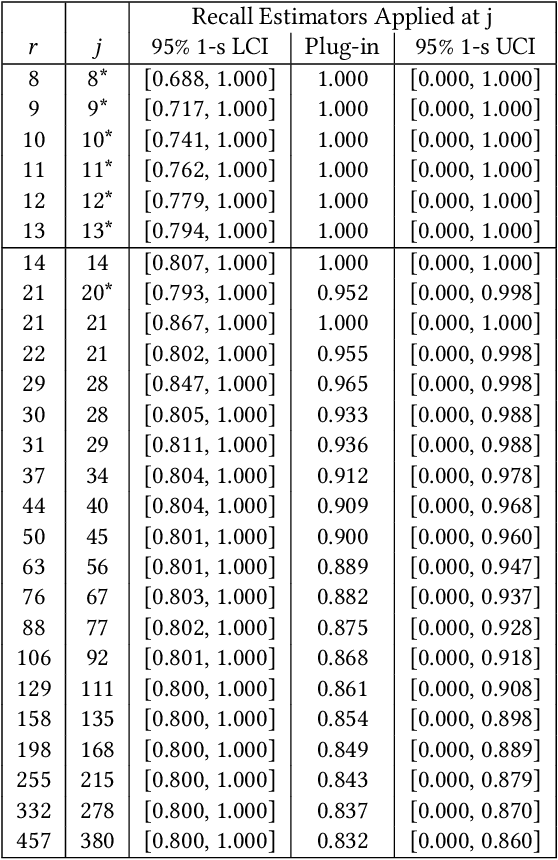
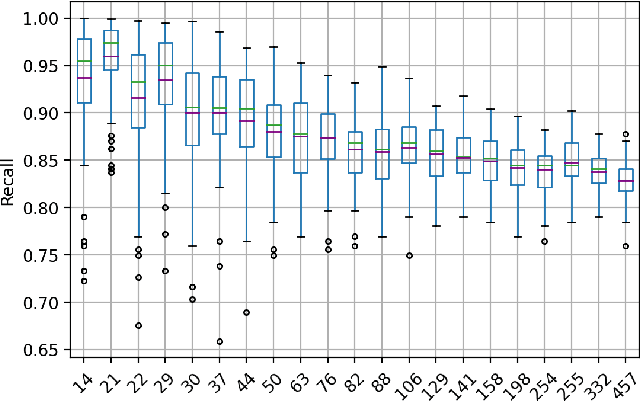
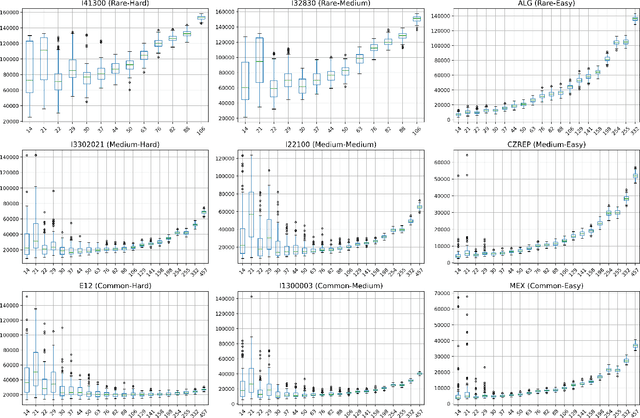
Abstract:Technology-assisted review (TAR) workflows based on iterative active learning are widely used in document review applications. Most stopping rules for one-phase TAR workflows lack valid statistical guarantees, which has discouraged their use in some legal contexts. Drawing on the theory of quantile estimation, we provide the first broadly applicable and statistically valid sample-based stopping rules for one-phase TAR. We further show theoretically and empirically that overshooting a recall target, which has been treated as innocuous or desirable in past evaluations of stopping rules, is a major source of excess cost in one-phase TAR workflows. Counterintuitively, incurring a larger sampling cost to reduce excess recall leads to lower total cost in almost all scenarios.
Heuristic Stopping Rules For Technology-Assisted Review
Jun 18, 2021
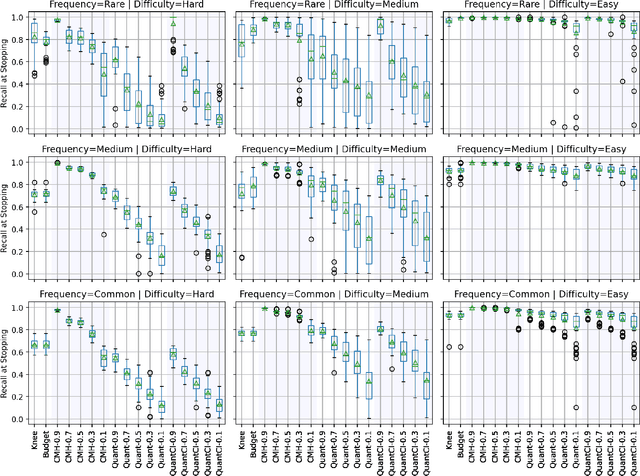
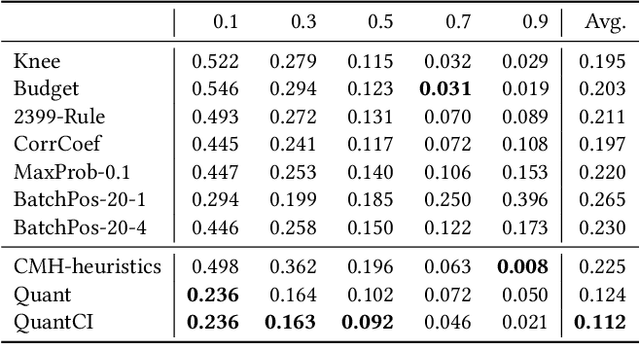

Abstract:Technology-assisted review (TAR) refers to human-in-the-loop active learning workflows for finding relevant documents in large collections. These workflows often must meet a target for the proportion of relevant documents found (i.e. recall) while also holding down costs. A variety of heuristic stopping rules have been suggested for striking this tradeoff in particular settings, but none have been tested against a range of recall targets and tasks. We propose two new heuristic stopping rules, Quant and QuantCI based on model-based estimation techniques from survey research. We compare them against a range of proposed heuristics and find they are accurate at hitting a range of recall targets while substantially reducing review costs.
On Minimizing Cost in Legal Document Review Workflows
Jun 18, 2021
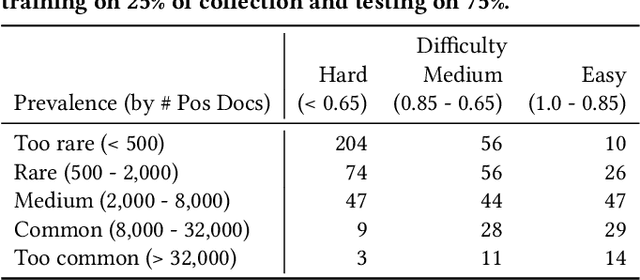

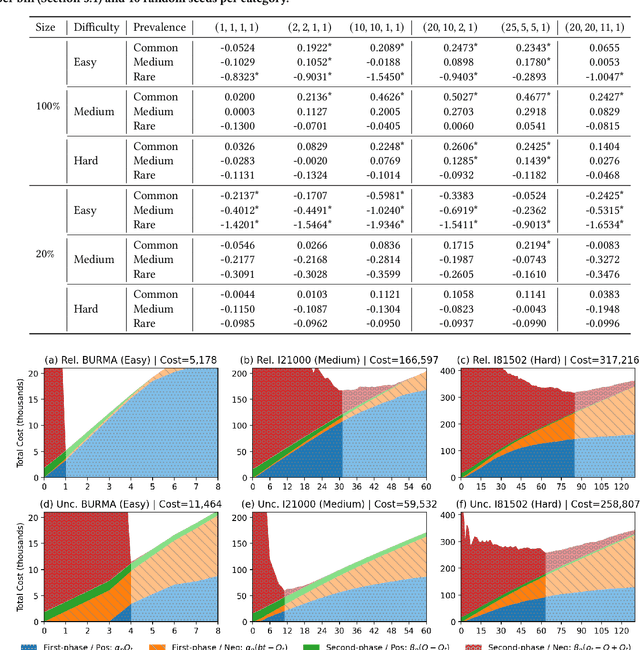
Abstract:Technology-assisted review (TAR) refers to human-in-the-loop machine learning workflows for document review in legal discovery and other high recall review tasks. Attorneys and legal technologists have debated whether review should be a single iterative process (one-phase TAR workflows) or whether model training and review should be separate (two-phase TAR workflows), with implications for the choice of active learning algorithm. The relative cost of manual labeling for different purposes (training vs. review) and of different documents (positive vs. negative examples) is a key and neglected factor in this debate. Using a novel cost dynamics analysis, we show analytically and empirically that these relative costs strongly impact whether a one-phase or two-phase workflow minimizes cost. We also show how category prevalence, classification task difficulty, and collection size impact the optimal choice not only of workflow type, but of active learning method and stopping point.
Goldilocks: Just-Right Tuning of BERT for Technology-Assisted Review
May 03, 2021
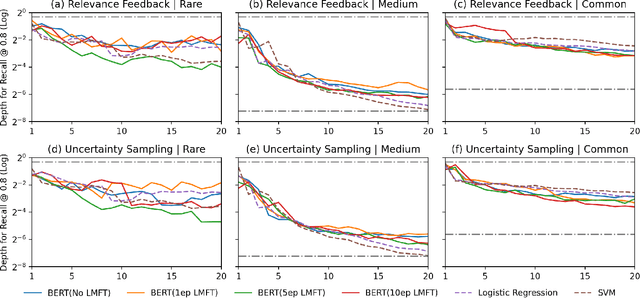
Abstract:Technology-assisted review (TAR) refers to iterative active learning workflows for document review in high recall retrieval (HRR) tasks. TAR research and most commercial TAR software have applied linear models such as logistic regression or support vector machines to lexical features. Transformer-based models with supervised tuning have been found to improve effectiveness on many text classification tasks, suggesting their use in TAR. We indeed find that the pre-trained BERT model reduces review volume by 30% in TAR workflows simulated on the RCV1-v2 newswire collection. In contrast, we find that linear models outperform BERT for simulated legal discovery topics on the Jeb Bush e-mail collection. This suggests the match between transformer pre-training corpora and the task domain is more important than generally appreciated. Additionally, we show that just-right language model fine-tuning on the task collection before starting active learning is critical. Both too little or too much fine-tuning results in performance worse than that of linear models, even for RCV1-v2.
The Analysis from Nonlinear Distance Metric to Kernel-based Drug Prescription Prediction System
Feb 24, 2021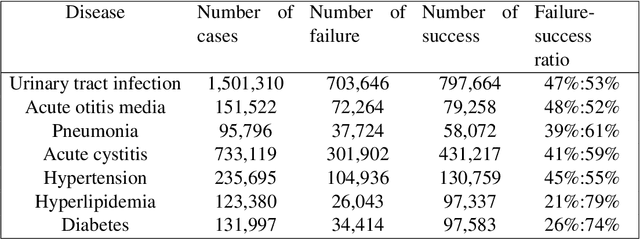

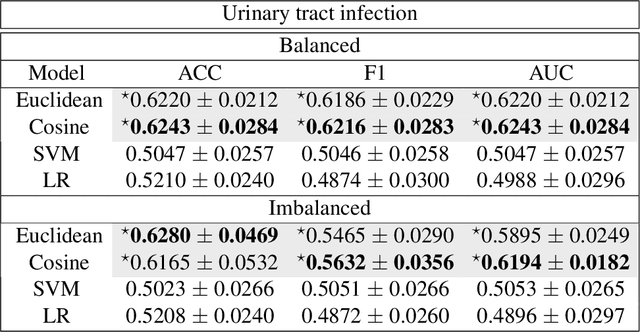

Abstract:Distance metrics and their nonlinear variant play a crucial role in machine learning based real-world problem solving. We demonstrated how Euclidean and cosine distance measures differ not only theoretically but also in real-world medical application, namely, outcome prediction of drug prescription. Euclidean distance exhibits favorable properties in the local geometry problem. To this regard, Euclidean distance can be applied under short-term disease with low-variation outcome observation. Moreover, when presenting to highly variant chronic disease, it is preferable to use cosine distance. These different geometric properties lead to different submanifolds in the original embedded space, and hence, to different optimizing nonlinear kernel embedding frameworks. We first established the geometric properties that we needed in these frameworks. From these properties interpreted their differences in certain perspectives. Our evaluation on real-world, large-scale electronic health records and embedding space visualization empirically validated our approach.
Cross-Global Attention Graph Kernel Network Prediction of Drug Prescription
Aug 04, 2020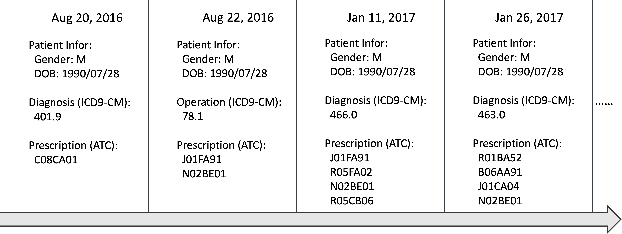
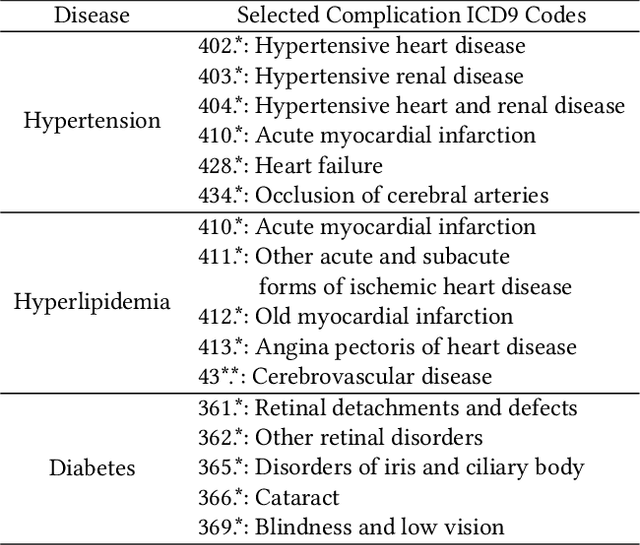
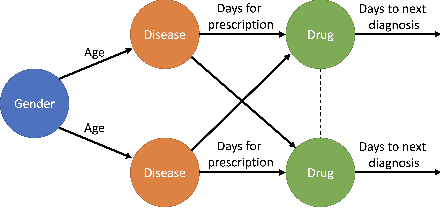

Abstract:We present an end-to-end, interpretable, deep-learning architecture to learn a graph kernel that predicts the outcome of chronic disease drug prescription. This is achieved through a deep metric learning collaborative with a Support Vector Machine objective using a graphical representation of Electronic Health Records. We formulate the predictive model as a binary graph classification problem with an adaptive learned graph kernel through novel cross-global attention node matching between patient graphs, simultaneously computing on multiple graphs without training pair or triplet generation. Results using the Taiwanese National Health Insurance Research Database demonstrate that our approach outperforms current start-of-the-art models both in terms of accuracy and interpretability.
* ACM-BCB 2020 (Full paper)
 Add to Chrome
Add to Chrome Add to Firefox
Add to Firefox Add to Edge
Add to Edge